- Home
- Graham Hancock
Magicians of the Gods: The Forgotten Wisdom of Earth's Lost Civilization Page 7
Magicians of the Gods: The Forgotten Wisdom of Earth's Lost Civilization Read online
Page 7
I can be credited with reviving and demystifying legendary catastrophism and challenging a too rigorous uniformitarianism.64
What Bretz the catastrophist and challenger of uniformitarianism could not have known, however, was that once he had invited the vampire of gradualism through the door it would not be satisfied with the compromise that he had tried to strike, but would keep on remorselessly sucking the blood out of any notion that what had happened in the Channeled Scablands had been any sort of “debacle” at all.
Thus, as the years have gone by and new generations of gradualist scholars have taken their places at universities around the world, the eight floods that were first allowed to modify Bretz’s single cataclysm have steadily increased in number—to a dozen, then to more than twenty, then to thirty-five, then to “about forty,” and finally, in recent papers, to as many as ninety or more!65 “The most current opinion,” summarizes Vic Baker, “is that there were about eighty floods that all occurred within a period of 2,500 years [roughly between 15,000 years ago and 12,000 years ago], possibly at regular intervals.”66
Eighty floods in 2,500 years works out at one flood approximately every thirty-one years—thus doing away with any need for a single exceptional cataclysm and accounting for the horrendous mess of the Channeled Scablands by the accumulated effects of a rather regular, predictable, essentially gradualist series of events. Better still, from the uniformitarian point of view, outburst floods from ice-dammed glacial lakes still occur today. They happen regularly in Iceland, for example, where they are called jökulhlaups, the term that has been adopted for them worldwide, and that I will continue to use here. Other locations where they are common include the Himalayas, Antarctica, Northern Sweden, and North America. As Geology Professor David Alt points out, several glacially dammed lakes in Alaska and northern British Columbia are prone to episodes of very fast drainage. These events usually occur “in summer when a fast snowmelt rapidly raises the level of the lake. The ice dam that held Glacial Lake Missoula probably floated and broke during the summer for the same reason.”67
In this way the uniformitarian doctrine that “the present is the key to the past,” and that the rate of change observable today is an accurate guide to rates of change that prevailed in the past, has quietly reasserted itself and Bretz’s disturbing flood evidence has been explained away as nothing very much to worry about after all. The scholars have also rather cleverly contrived to have their cake and eat it: on the one hand giving Bretz a medal and proclaiming that they are “all catastrophists now”; on the other quietly transmuting Bretz’s catastrophe into the sort of thing that one sees every summer in Alaska and British Columbia.
This is all very reassuring, of course, but suppose that Bretz’s original insight was right and that what happened in North America at the end of the Ice Age really was a sudden, cataclysmic flood, something unprecedented and unmatched since?
Suppose it really was a debacle?
Back to Bretz
Randall Carlson is quite certain that it was indeed a debacle—one that unfolded on an almost unbelievable scale—and has spent the last twenty years trekking back and forth across the Channeled Scablands asking local geologists difficult questions that no one else seems to have considered and building a formidable case.
The sort of case, I suspect, that Bretz would be making if he were still with us and at the height of his powers.
I first met Randall in 2006. The North American Ice Age floods were among the subjects we discussed and I was startled to discover that he didn’t accept the ice dam theory at all, and regarded Glacial Lake Missoula as a huge diversion—an easy solution that panders to uniformitarian prejudices and has led geologists away from the truth. In the years that followed we corresponded from time to time and occasionally bumped into each other at conferences where we were both speaking. I was enormously impressed by his depth of knowledge, by his field experience and by the intriguing new insights his research seemed to offer into the mysterious events that brought the Ice Age to an end. I found we shared a particular and growing interest in the Younger Dryas—that return to full glacial conditions that began suddenly 12,800 years ago, just when the world seemed to be warming up, and that ended equally suddenly 1,200 years later.
During this peculiar episode certain Stone Age hunter-gatherer peoples such as the “Clovis” culture of North America vanished from the archaeological record and there were mass extinctions of animal species—so clearly something unusual was going on—yet no uniformitarian or gradualist explanations have ever been offered. Moreover, although I didn’t investigate it in my 1995 book Fingerprints of the Gods, I realized afterward that the span of the Younger Dryas, from 12,800 years ago to 11,600 years ago, coincided exactly with the “window” during which I had argued that an advanced civilization of prehistoric antiquity was obliterated from the face of the earth and lost from human memory.
Accordingly in my book Underworld, published in 2002, I was more attentive to the Younger Dryas problem. “At around 13,000 years ago,” I noted:
the long period of uninterrupted warming that the world had just passed through (and that had greatly intensified, according to some studies, between 15,000 years ago and 13,000 years ago68) was instantly brought to a halt—all at once, everywhere—by a global cold event known to palaeoclimatologists as the “Younger Dryas” …69 In many ways mysterious and unexplained, this was an almost unbelievably fast climatic reversion—from conditions that are calculated to have been warmer and wetter than today’s 13,000 years ago,70 to conditions that were colder and drier than those at the last glacial maximum just a few hundred years later.71
From that moment, around 12,800 years ago, it was as though an enchantment of ice had gripped the earth. In many areas that had been approaching terminal meltdown full glacial conditions were restored with breathtaking rapidity and all the gains that had been made since the LGM [Last Glacial Maximum—around 21,000 years ago] were simply stripped away: “Temperatures … fell back on the order of 8–15 degrees centigrade … with half this brutal decline possibly occurring within decades. The Polar Front in the North Atlantic redescended to the level of Cabo Finisterre in northwest Spain and glaciers readvanced in the high mountain chains. With respect to temperature the setback to full glacial conditions was nearly complete…”72
For human populations at the time, in many except the most accidentally favored parts of the world, the sudden and inexplicable plunge into severe cold and aridity must have been devastating.73
The sense of mystery—and mortal danger to mankind—that clung about the Younger Dryas continued to intrigue me, encouraging me to read up on it and try to understand it better. I recall a number of conversations and email exchanges with Randall after 2006 that focused on the subject and it became increasingly obvious to me that the Younger Dryas had been a global cataclysm in every meaningful sense of the term. It wasn’t until 2013, however, when Randall made the case to me that North America, and particularly the Channeled Scablands, had stood at the epicenter of that cataclysm, that I decided it was time to see the evidence on the ground. On impulse I invited him to join me on a field trip. It took more than a year to find a time that worked for both our schedules but finally, in September 2014 I met Randall in Portland, Oregon, and we took off east and north into neighboring Washington State to explore the Scablands in the big, red four-wheel drive we’d hired.
Chapter 4
Journey Through the Scablands
We’re on a 2,500 mile (4,000 kilometer) road trip from Portland, Oregon to Minneapolis, Minnesota. The journey would be shorter if we took the direct route. But we’re stopping and diverting into coulees and river valleys and around buttes and up the sides of mountains and across the Channeled Scablands immediately south of the vast Cordilleran and Laurentide ice caps that once covered much of North America. The objective is for me to get as full an understanding as possible of what happened here and by the fourth day, when we reach Dry Falls in the mi
ddle of the extraordinary scar on the landscape called Grand Coulee, the picture is beginning to become clear.
The ground under our feet is ancient black basalt covered with a thin layer of topsoil. The basalt, extruded by volcanic eruptions between seventeen million and six million years ago, covers much of the Columbia Plateau and in some places is 2,000 meters (6,600 feet) thick.1
Figure 16
Not in Grand Coulee, though, because here it’s as if some capricious force, perhaps even the hand of God himself, has seized a giant chisel with a blade miles wide, plunged it violently into the earth and gouged out a sheer-sided gash hundreds of feet deep and almost 60 miles (96 kilometers) long. The “chisel,” however, was not made of steel but of immense quantities of rushing, turbulent, debris-laden water that flowed for a few weeks only—the water of Bretz’s flood. “Grand Coulee,” he wrote, affords:
the greatest example of canyon-cutting by glacial streams not alone for the Columbia Plateau, but for the world … A glacial river three miles in minimum width spilled southward here over the divide and down a steep monoclinal slope … The stream descended nearly 1,000 feet on a grade of approximately 10 degrees … Such a situation is unparalleled, even in this region of huge, suddenly initiated, high-gradient rivers … At least 10 cubic miles of basalt were excavated and removed.2
Bretz refers here only to the northern or Upper part of Grand Coulee.3 But the same amount of basalt again was also excavated from Lower Grand Coulee as “the stream” rushed on. Making our way here today we paused in the Ephrata Erratics Fan, south of the southern end of Lower Grand Coulee, to see where all that basalt excavated by the waters was dumped. It was a chaotic, jumbled, disturbing sight—disturbing because as far as the eye could see in all directions across the prairie lay scattered countless thousands—more likely millions—of jagged, broken basalt boulders, some about the size of a family car, some smaller—down to the size of a football—and many larger.
“Everything was reduced to rubble,” Randall Carlson explained to me, as we stood there in the midst of the Fan, “and that’s what you’re seeing. This rubble was part of the former world.”
“The former world?”
“Yes. The antediluvian world. And what’s lying here on the surface is just a fraction of what the flood flushed out of Grand Coulee. The rubble goes down deep. Hundreds of feet deep.”
From the Ephrata Fan we drove north on Washington State Route 17 into Lower Grand Coulee, it’s sheer, forbidding basalt cliffs rearing up on either side of us, the gray rainclouds above reflected darkly in the chain of alkaline lakes—Soap Lake, Lenore Lake, Blue Lake and Park Lake—that lie ponded in its floor. Now we’ve reached Dry Falls at the head of Lower Grand Coulee and as we get out of the truck Randall reminds my wife Santha to bring her camera. “You’re going to see something cataclysmic here,” he announces with a mischievous grin.
Meet Randall Carlson
You may be too young to remember the 1977 TV series called The Life and Times of Grizzly Adams, but you can always Google it if you weren’t here.
The eponymous hero, a tough woodsman played by actor Dan Haggerty, was a big, bluff, bearded sort of fellow and Randall Carlson, by virtue of his enormous beard, his general appearance and his rough, gruff personal style, reminds me of him a lot. Randall lives in Atlanta, Georgia, now, but he spent most of his youth in rural Minnesota and his voice still carries the quirky undertones of Scandinavian and German that make the Minnesota accent so recognizable.
He grew up on the shores of Schmidt Lake, one of tens of thousands of small meltwater lakes spread across Minnesota and Wisconsin, and he used to go fishing there as a boy, perched on a huge boulder that he afterward understood to be a glacial erratic—“a boulder quarried from bedrock and carried by an advancing glacier perhaps many hundreds of miles from its source to be deposited in a location far removed from its origin.”4
Today, half a century on from his boyhood, he says that the Midwestern landscapes of his youth have left an indelible imprint on his psyche:
From these early experiences I entered into a sort of dialogue with the earth which continues unabated to this day. This dialogue has involved thousands of hours spent in the field, traversing and studying a wide variety of landscapes, along with thousands of hours in the study of various sciences related in one way or another to the goal of understanding this extraordinary planet upon which we are engaged in this ongoing human experience … It is a fearsomely dynamic planet, one that has undergone profound changes on a scale far exceeding anything within recent times. In fact I now realize that what we think of as history is merely the record of human events that have transpired since the last, great planetary catastrophe. I also understand that the imprint of these catastrophes is to be found all around us, in virtually every environment, and we are just beginning to be able to perceive and decipher the evidence.5
Randall makes his living as an architect and builder but his passion is geology.
Catastrophist geology.
And as those who have attended one of his lectures will attest, he knows more about it than pretty much anyone else you are ever likely to meet. He has gleaned his knowledge from a vast reading of the scientific literature and, as he says above, from thousands of hours of fieldwork. To me this sort of in-depth, on-the-ground learning, the miles walked through the wilderness, the years of dedicated library research, mean far more than any university degree. Randall is not a geologist and does not claim to be a geologist but his grasp of the subject is worth a dozen PhDs.
And right now we’re standing on a sort of concrete pier with waist-high fencing, suspended out over the plunging horseshoe amphitheater of Dry Falls. There’s a chill wind blowing this late September day and Randall is about to give me a geology lesson …
Dry Falls
“Ever been to Niagara Falls?” Randall asks.6
I confess that I have not.
“But you’ve seen photographs? You have a sense of the place?”
“I suppose, so, yes…”
“OK, so just a guess … Which is bigger?” He indicates the vista that confronts us. “Dry Falls? Or Niagara?”
I’m thinking it’s a trick question. Randall, being a Minnesotan, is of course compelled to ask trick questions. I look out at the natural amphitheater. It’s a long way down. And a long way across. A couple of circular lakes of pooled rainwater, overgrown with reeds, decorate the base of the towering horseshoe of sheer cliffs confronting me—over which, it is absolutely obvious, huge quantities of water must once have flowed. I haven’t been to the Niagara Falls, which are 51 meters high, but I did spend a day of amazement at Victoria Falls in southern Africa, and they’re 108 meters high. The classic horseshoe shape of Niagara that you see in all the pictures is repeated at Victoria Falls. And here’s the same horseshoe shape in Washington State in the US, preserved in the dry fossil of an ancient cataract.
“Dry Falls is bigger than Niagara,” I say, sounding more confident than I feel.
“Okay, good so far, but how much bigger?”
“Twice as big,” I hazard a guess.
“Not bad,” Randall says. “But actually Dry Falls is close to three times as high as Niagara and more than six times as wide.” He points. “See how the cliffs are scalloped there?”
I do. The Dry Falls horseshoe is in fact two horseshoes side by side, one to the east, one to the west.
“Well, Niagara would fit easily into just half of the eastern horseshoe and its rim would be almost two hundred and fifty feet beneath the rim of Dry Falls. Also—look there…” Randall draws my attention to the eastern side of the horseshoe where there’s a gap and then a high, narrow fin of cliffs running south. “That’s Umatilla Rock,” he says, indicating the fin. It would have been a kind of island at the peak of the flood. An underwater island.”
“Underwater?”
“Yes. When the flood came through here, the water was more than five hundred feet deep. It would have overtopped Umatilla Rock,
and the Falls themselves, and right here where we’re standing, by, oh, a hundred, maybe a hundred and fifty feet.”
“So if I’d been able to stand here then…”
“Which you wouldn’t have…”
“I know. I’d have been swept away, but just for the sake of argument, if I had been able to stand here, I take it I wouldn’t have seen a sheer sheet of water bursting over the lip of the falls and crashing down hundreds of feet?”
“No, because that was happening far beneath the surface. What you would have seen at this point would have looked more like a whirling, churning slope in the torrent with some kind of abrupt bump or gradient in it than an actual waterfall, but all the work that a waterfall does on rock was still going on, under the surface…”
“What do you mean by work on the rock?”
“The water is coming through here in enormous quantities and horribly fast, running at up to seventy miles an hour according to some estimates, and you’ve got to realize that it isn’t just water. It’s more like a slurry of thick mud, and there’s whole forests torn up by their roots that are roiling around in it, and fleets of icebergs jostling on the surface, and down at the bottom there’s a huge rumbling rubble of rocky debris, boulders like the ones we saw dumped all over the Ephrata Fan, and this whole mess is rushing and tumbling and plucking as it passes…”
“Plucking?”
“Yes, that’s the best way to describe it. Like giant fingers plucking out blocks of the basalt bedrock, ripping them out, dragging them into the torrent and sweeping them downstream—that’s how the erosive work is done.” Randall gestures again at the scalloped, horseshoe cliffs. “But what we see from here is less than half the picture. If we were up in an airplane looking down we’d see another set of horseshoes even bigger than these ones off to the east, wrapping round beyond Umatilla Rock…”
“So with all that taken into account, what’s the total extent of Dry Falls?”

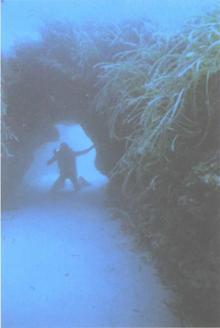 Underworld: The Mysterious Origins of Civilization
Underworld: The Mysterious Origins of Civilization The Master Game: Unmasking the Secret Rulers of the World
The Master Game: Unmasking the Secret Rulers of the World America Before
America Before Entangled
Entangled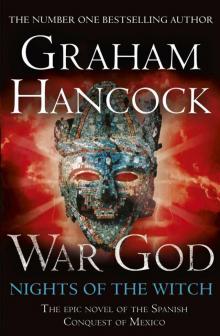 War God: Nights of the Witch
War God: Nights of the Witch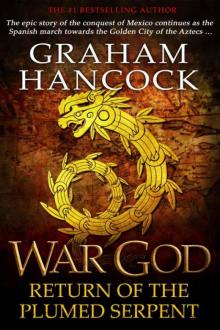 War God: Return of the Plumed Serpent
War God: Return of the Plumed Serpent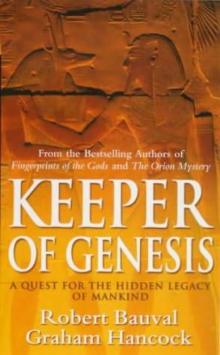 The Message of the Sphinx AKA Keeper of Genesis
The Message of the Sphinx AKA Keeper of Genesis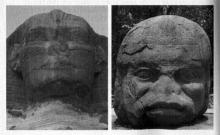 Fingerprints of the Gods
Fingerprints of the Gods The Sign and the Seal
The Sign and the Seal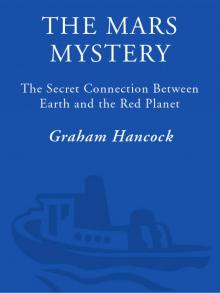 The Mars Mystery: The Secret Connection Between Earth and the Red Planet
The Mars Mystery: The Secret Connection Between Earth and the Red Planet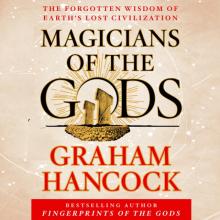 Magicians of the Gods: The Forgotten Wisdom of Earth's Lost Civilization
Magicians of the Gods: The Forgotten Wisdom of Earth's Lost Civilization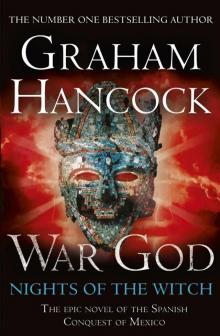 War God
War God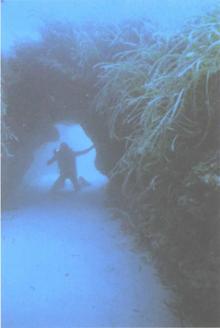 Underworld
Underworld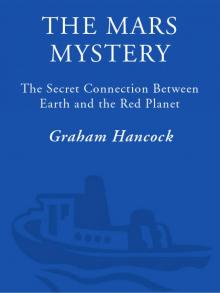 The Mars Mystery
The Mars Mystery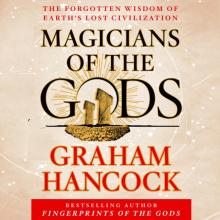 Magicians of the Gods
Magicians of the Gods The Master Game
The Master Game